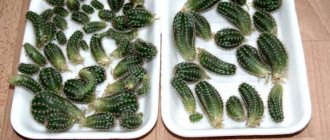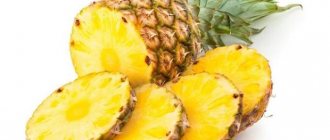Growing muraya at home
At home, caring for Muraya will not require you to spend a lot of time and effort. The only thing that is necessary is the creation of specific conditions to which it is accustomed.
This tree can reach 1.5 meters in height. It is also distinguished by the frequency of changes - first there will be a green crown, then snow-white flowers, then unevenly ripening fruits. Fully ripe berries have a blood-red color, which gives the plant a special beauty.
There are a large number of stories and legends about him. Some say that even during the reign of emperors in China, murai guards were equated to the emperor's guard. People believed that this plant had the power to prolong youth, cure cancer and grant eternal immortality. It was also noted that the aroma and infusion from the leaves help not only heal the body, but also the soul.
How to grow muraya? In order to please yourself with this plant at home, you need to know certain features.
Lighting
The Muraya plant is a light-loving plant. That is why for normal growth and development it requires a sufficient amount of lighting. Avoid exposure to direct sunlight.
Diffused light, both western and eastern windows, are best suited. But even with insufficient lighting, it can begin to shed its leaves. During the reduction of daylight hours, it is necessary to provide illumination.
The duration of daylight hours should be 12-14 hours. And then, it will delight you with beautiful leaves, a lush crown, attractive flowers with an unsurpassed aroma and delicious fruits.
Temperature
Even though this is an exotic plant, it does not tolerate heat well.
- Winter temperature should be within 17 °C,
- And for comfortable summer development – no higher than 25°C.
It is also necessary to beware of drafts and sudden temperature changes.
Humidity
This plant is not one of those that requires constant spraying. It tolerates dry air normally, but if this condition lasts for a long time, the leaves may begin to dry out and the flower stalks may fall off.
That is why it is recommended to periodically spray it with warm water. And in order to humidify the air, it is recommended to place a bowl with wet expanded clay next to it.
Forum of flower growers Frau Flora
About growing indoor and garden plants; discussion of species, varieties, diseases, pests.
- Unanswered topics
- Active topics
- Search
- About Us
Murraya - growing secrets
Moderator: Tatyanka ATV
- Go to page:
Murraya - growing secrets
Posted by sandmartin » May 16, 2010, 10:24 pm
Murraya - growing secrets
Murraya (lat. Murraya) Rutaceae family
Tree of Japanese Emperors. Let me introduce you, Muraya is the closest relative of the well-known lemons and oranges. They began to grow muraya in apartments not so long ago, but it immediately won the hearts of flower growers with its unpretentiousness, decorativeness, and most importantly, the aroma of its small white flowers.
Murraya belongs to the Rutaceae Family, like all citrus fruits. The plant received its name in honor of the 18th century German botanist Johan Andreas Murray.
Murraya Koenig and paniculata. In nature, there are more than a dozen species of this shrub. But the most famous are Murraya Koenig and paniculata. Koeniga (chokeberry) grows in India and Sri Lanka, where its leaves are consumed both fresh and dried. The second name of this plant is “Curry Tree” (dried leaves are an optional component of “curry” seasoning). The fruits can be eaten, but the seeds are poisonous. Muraya paniculata (red-fruited). The plant most often cultivated indoors is the red-fruited orange jasmine, which has great decorative properties - fragrant caps of white flowers, dark green glossy leaves, and a unique jasmine aroma. This type of murai is often grown as a bonsai.
Care and propagation: Lighting: The plant is very demanding on lighting - preferably located on the south side. Watering: Watering is moderate, stagnation of water is not allowed. Spraying is recommended. Planting and replanting: Replant every 2 years as the plant grows into a mixture of peat, sand, turf and leaf soil in equal proportions. The pot must be high, since the root system develops deeper “like a carrot.” Some plants bloom 3-4 months after planting. The ripening period of berries, like all citrus fruits, is long - about 9 months.
Reproduction. Reproduction is by cuttings and planting fruits. It must be borne in mind that the germination of fruits drops sharply over time.
Medicinal properties were known back in Ancient Egypt. Its fruits, cherries, contain a large amount of vitamins and microelements, although they taste like grass. Even my dog ate them with pleasure, but more on that later. Even leaves and flowers were used to make medicinal tea. Murraya fruits have a general tonic property and also lower blood pressure; the leaves can be used as a wound healing agent. To do this, apply a paste of fresh leaves to the wound. It is also recommended to chew the leaves (the taste, alas, is unpleasant) in the presence of non-healing ulcers on the oral mucosa. According to Japanese legend, the smell of Murraya flowers has a healing effect, and a person who constantly inhales its aroma will have smart and healthy offspring. That is why small trees always stood in the emperor’s bedroom. Ordinary Japanese were forbidden to cultivate this plant under penalty of death. First, I bought a small murayka as a gift for my mother, since she had recently lost a large lemon. A small tree grows in a 200 gram glass and blooms! One half-opened flower smells throughout the entire room!
Re: Muraya
Post by Svyatoslav » May 16, 2010, 10:42 pm
Re: Murraya
Post by Natalie.ya » May 16, 2010, 11:31 pm
Re: Murraya
Posted by sandmartin » May 16, 2010, 11:41 pm
Re: Murraya
Post by Svyatoslav » May 16, 2010, 11:59 pm
Re: Muraya
Posted by sandmartin » May 17, 2010, 00:12
Re: Murraya
Post by Svyatoslav » May 17, 2010, 00:34
Muraya Koenig has black fruits. Exotic Murraya (Murraya exotica) has snow-white fragrant flowers and bright red berries up to two centimeters in size. This beauty reaches a height of up to three meters. But, probably, there are other types of murai with red fruits - berries.
sandmartin, how much does one muraya fruit cost in Moscow?
Is the seed from the muraya fruit itself large? What size is it approximately?
Re: Murraya
Posted by sandmartin » May 17, 2010, 10:58 pm
Svyatoslav the plant in the photo I bought for 100, the fruits were sold for 10 rubles (but I saw 30 apiece) seedlings like mine sell for 40-50 rubles
The red-fruited muraya berry is shaped like a slightly elongated cherry pit - like a small cherry pit, only IMHO the shell is softer and thinner (but I didn’t dare pick it)
Re: Murraya
Post by Svyatoslav » May 18, 2010, 01:43
Re: Murraya
Posted by sandmartin » May 18, 2010, 11:02 am
Re: Murraya
Post by TatyanaK » May 18, 2010, 2:22 pm
Muraya appeared to me in the late 80s, and since then, despite repeatedly changing preferences, it has not been supplanted by any new hobby in the plant kingdom. Unfortunately, in those years it was not possible to photograph flowers, and even on color film (we saved slides!), and therefore I cannot demonstrate those luxurious trees that grew in the apartment over the years, and when their size outgrew the size of my window sill, safely migrated to work in the laboratory, or to the library where a neighbor worked. Since this tree can be called self-forming (in Muraya, all shoots with buds stop growing and begin to grow new branches until they, in turn, bloom), usually the size of the transplanted plants was approximately 40x40cm. Of course, you can achieve larger sizes if desired. I can’t remember now how many of these plants I have grown, but before each parting, new plants were sown from the fruits of the new harvest. Here in one photo there are fresh shoots from yesterday, not all of them have sprouted yet,
and on the second, a seedling from the end of last year and already with a bud!
By the way, there is no need to pollinate the plant - it is self-pollinating and perfectly figures out how many flowers to set, so as to leave offspring and not harm the plant - it will shed the excess ovary. This little one bloomed last year, gave seeds, and is doing well today.
I don't know of a more problem-free stone fruit plant than this. The only condition is a bright location. I have it growing on a window with western exposure, but it will grow even on a northern window, perhaps there will be problems with flowering. Naturally, you need to periodically turn the pot with the plant to ensure uniform growth in all directions. I have no experience growing on racks. By the way, the shoots that have stretched out over the winter can be cut (I have done this several times), thereby stimulating the appearance of new shoots. Of the pests, it is only affected by scale insects, and then only when the plant is forgotten. I admit, I don’t often pamper Muraya with spraying, although she always gratefully responds to this with flowering. It blooms several times a year (meaning mass flowering), but at least 2 times - in spring and autumn. Single flowers may appear throughout the year, except for the darkest months. One flower is enough to fill the entire room with the finest aroma. I also like this plant because with age its trunk acquires a light color and looks very attractive (once in the laboratory we painted an adult tree to look like a birch). Now about germination. Freshly picked fruits sprout in about 2 weeks, old ones can sit for a month or more. In such cases, to ensure increased humidity, it is better to cover them with a bag. Often, when there is nowhere to put the bones, I poke them into some nearby pot and forget. I remember when, after a certain time, green shiny leaves appear. So in this regard, the plant is very convenient for flower lovers. This plant is also called the tree of Japanese emperors. The plant helps with cardiovascular diseases. Dark red ripe muraya fruits have a specific, slightly sweet taste. They resemble hawthorn in shape and color and contain many biologically active substances. You can take 3-4 berries a day to prevent premature aging and withering of the body, as well as to alleviate the condition of cardiovascular diseases. The leaves and fruits of muraya contain the substance hesperidin, which strengthens the walls of blood vessels and has a beneficial effect on capillary permeability. Decoctions and tinctures are prepared from this plant, which are recommended for the treatment and prevention of heart disease, throat disease, thyroid disease, diabetes and other diseases.
Sources: https://frauflora.ru/viewtopic.php?t=1499 https://ufermer.com/komnatnye-rasteniya/fikus/kauchukovyj-jelastik.html
Watering the plant
For irrigation, use settled soft water at room temperature, which does not contain chlorine. You can add a small amount of citric acid or vinegar to the water, this will soften the water.
- In winter, watering is reduced to a minimum and carried out when the top layer dries out.
- In summer, watering should be plentiful, but care must be taken to avoid stagnation of water and waterlogging of the soil.
If the watering regime is violated, this can lead to falling and yellowing of leaves. But waterlogged soil can lead to the development of root rot.
Soil and fertilizing
The acidity of the soil for an indoor muraya flower should be in the range of 6 – 7.5 pH. To prepare the nutrient mixture, you need to take turf, leaf soil, humus and sand in a ratio of 2:2:2:1. The soil should be loose. You can also buy a ready-made mixture for citrus fruits and add baking powder to it. Its amount should depend on the age of the plant, the younger the more.
Top dressing
Fertilizer should be applied no more than once a month. It is recommended to alternate mineral and organic fertilizer. When feeding, you must remember the “golden” rule - do not overdo it. And the most important point is the absence of chlorine in the fertilizer. Because it is susceptible to chlorosis.
Transfer
Young plants are replanted annually.
- Containers for transplantation are taken 1-2 cm larger than the previous one each time.
- But adult plants are transplanted once every 2-3 years into the container where they grew before. To carry out this procedure, the transshipment method is often used.
- It is recommended to rid the roots of the old soil and add new soil.
- The root collar must be kept on top of the soil.
Trimming
To enhance branching and make the crown shape lush, it is recommended to pinch each branch during the growing season. But the dwarf form of muraya does not require pruning at all, since it is itself a lush branching shrub.
Diseases and pests
Most often it is affected by:
- scale insect
- spider mite
- aphids
- whitefly
- mealybug
In case of exposure, it is recommended to immediately treat with insecticidal preparations.
Among the diseases she is exposed to:
- chlorosis, when growth slows down and leaves turn yellow.
- The question is also often asked: why doesn’t Muraya bloom? The reason for this may be a cramped pot. As soon as you replant and the plant takes root, it will immediately delight you with its flowering
Medicinal properties: benefits and harms of muraya
The main feature of this plant is that all its components are useful and are used in various fields. These are stems, leaves, roots, and flowers. Due to the fact that they secrete phytoncides and aromatic oils, it is often used to treat:
- cardiovascular diseases: hypertension, ischemia, angina pectoris
- respiratory system problems
- headache
- sore throat, stomatitis
- suffered a heart attack. It is recommended to pour ¼ liter of vodka into 5 tablespoons of leaves and fruits of the plant. Leave in a dark place for 10 days. Take 30 drops every day.
- dermatitis.
- diabetes
This plant is also often used in cosmetology. And many say that daily use of this plant in any form can prolong life.
Despite all the positive aspects, there are some precautions. Do not get carried away with alcohol tincture, as it lowers blood pressure. But basically no contraindications were found.
So grow this plant and enjoy its beauty. You will succeed!
You will also be interested in watching a video about caring for and growing muraya:
Difficulties in growing
- If there is a lack of microelements in the substrate or high alkalinity of the soil, the leaves become yellow.
- If the light is too bright or due to sunburn, the leaves at the edges and in the center dry out.
- If the air is too dry, the tips of the leaves dry out and the flower stalks fall off.
To summarize the above, Murraya is an absolutely unpretentious plant that can be grown at home even from a small seed or cutting, and with good care and attention, it will give an unforgettable experience and a good mood. The flower also has medicinal properties - Murraya is used to treat many diseases.
Muraya does not bloom
Muraya is an evergreen tree or shrub that can grow up to 2 meters in height.
Most often, gardeners grow Muraya paniculata. With proper care, the flower can bloom and bear fruit from early spring to late autumn. This adds a certain zest to the bush. It’s so beautiful when you can simultaneously see snow-white, fragrant flowers and fruits of all shades, from bright red to dark green. Unfortunately, not all lovers of an exotic guest from the tropics can achieve such an interesting effect. What is necessary for its rapid and long-lasting flowering? Naturally, comfortable living conditions and absence of diseases. How to achieve this? Here are some tips.
- Muraya is very sensitive to the right lighting. She feels best in places where the light is bright enough, but direct rays of the sun do not burn the delicate foliage. As a rule, these are south-eastern or western windows. On southern windowsills the flower runs the risk of getting burned, and on northern windowsills the muraya will wither from lack of light. In both cases, you won’t get flowering.
- The tropical guest is partial to moisture, and therefore requires daily and abundant watering. In winter, it is better to reduce it somewhat so that the top layer can dry out slightly.
- Spraying the flower is also vital, especially in winter, when the air in apartments is dried out by heating devices. Too low humidity causes flowers and buds to fall off, as well as spider mite disease.
- Due to the tendency of muraya to chlorosis, watering should be done only with well-settled, or better yet, melt or rain water. For the same reason, chlorine-containing fertilizers should not be used.
- During the growing season, and especially with the beginning of flowering, the plant needs regular alternate feeding with mineral and organic fertilizers. The procedure must be carried out monthly. But remember that an excess of nutrients will lead to the formation of a large volume of leaf mass, and the plant will not have any strength left for flowering.
- Despite its love of moisture, Muraya does not tolerate waterlogging. Therefore, it needs a loose, permeable substrate and a good drainage layer. If there is excessive moisture, the root system rots and the plant faces death. In this case, there is no talk of flowering.
- Muraya, especially at a young age, requires annual transplantation into a larger pot. But if the diameter of the new container exceeds the previous one by more than 2 cm, then in this case the plant will devote all its energy to the development of the root system. Muraya blooms profusely only in cramped pots!
- If the temperature regime is violated, the muraya will also feel unwell. She does not like excessive heat above +25 °C. The plant does much better at lower temperatures, which in winter should not exceed +17 °C. Protect the tropical resident from drafts and other sudden temperature fluctuations. This can lead to loss of flowers and buds, as well as various diseases.
- Muraya flowers have one more feature - they do not tolerate the touch of hands. Enjoy their snow-white petals and wonderful aroma from a distance.
How to care for a flower in case of problems
Doesn't grow
- Most likely, your tree does not receive the required complex of nutrients. During the intensive growth phase, feeding the flower with complex mineral fertilizer will have a beneficial effect.
- It could also be due to a cramped pot or lack of air in the soil. Due to frequent watering, the earthen ball is compressed, which makes it difficult for the roots to breathe, so it’s a good idea to carefully remove the plant from the pot, slightly stir up the earthball, performing a kind of loosening of the soil. You may need to be transplanted to a more spacious home. This should be a transshipment, because it is less stress for the flower.
- An unfortunate location may also be to blame for the problem. The most favorite places for the flower are in the south and southeast.
The flower dries or leaves fall off
- The most common option is overwatering or lack of moisture. Check these procedures. When underwatered, the leaves first turn yellow and then fall off. Excess water can affect the roots - they will begin to rot.
- If a flower was transplanted with a complete replacement of the soil, then this process is the most likely outcome. The reason for this is the damaged root system of muraya. In this case, all that remains is to water regularly, placing it in a sufficiently lit area, and also spray. You can try using root.
- If Muraya's leaves fall off, there is also the possibility that the fertilizers you decided to feed the plant with are not suitable for it. Fertilizers for muraya should be used as for citrus fruits.
- Why else does Muraya shed its leaves? The plant is frozen or standing in an area with unstable temperature conditions. Place the flower on the south side, protect it from drafts.
Doesn't bloom
- Find out what type of plant you have. There are decorative varieties that, in principle, do not bloom or bloom relatively rarely (for example, Japanese, Dutch and others).
- The plant needs feeding.
- Cramped pot, lack of lighting and watering.
Despite these problems, many gardeners choose muraya as a favorite plant in their home “garden”. Still unsure whether to grow the imperial flower? Once you enjoy the aroma of muraya, you will make the right decision.
Murraya paniculata: features, types, planting and care
Murraya is an exotic crop. This is a tree with high decorative qualities and a wonderful aroma. Tasty and healthy fruits are another advantage of the culture. In the gardens of our country, you can most often find Murraya paniculata. This article will tell you about the features of this variety and the nuances of its cultivation.
Murraya flowering and fruiting
I have many specimens of Murraya paniculata of different ages, large plants and young ones, photos of Murraya from different bushes. Murraya Paniculata (Russia) – seed cycle in home cultivation:
Murraya paniculata (Russia) in buds, 03/17/2016
Murraya paniculata has bloomed and set, 05/20/2016
Murraya paniculata - one and adult bushes in bloom 03/18/2016
Murraya paniculata (Russia) - fruiting of an adult bush, 03/17/2016
Murraya paniculata - ripe fruits, 05/03/2016
Flowering of young Murraya, 03/17/2016
The flower is ready for pollination - the pollen is ripe, 03/17/2016
Two seeds in the fruit - bloomed and set - from the cradle, 05/20/2016
Another Murraya blooms from the cradle, 05/20/2016
The pollen of this Murraya flower has not ripened, 05/20/2016
Description
Murraya paniculata (Murraya paniculata from Latin murraya paniculata) belongs to the Rutaceae family. It is often called the imperial tree, which is due to its origin. Once upon a time, the crop was grown only in the palace gardens of Japan and China. Today it can be found not only in Asia, but also in some other places.
In Russia, such trees decorate winter gardens and greenhouses. You can grow the crop in an apartment.
The variety in question received its name in honor of the botanist Yu. A. Murray. It was he who discovered and described it. The culture is evergreen. At home, it is limited to a modest height (up to 1 m). It looks like a mini-tree or spreading shrub.
The leaves are rich green, feathery, oval in shape. They cover the entire area of the shoots. The flowers are snow-white and very beautiful. The petals gracefully bend back. The inflorescences are usually large. Murraya paniculata begins to bloom at the age of five.
Because of its subtle, pleasant aroma, seed producers gave the culture a very symbolic name - “imperial perfume”.
It is believed that the smell emanating from the tree helps cope with depression, reduces headaches, and improves sleep. Another unusual name for the culture is “orange jasmine.” It is due to the visual similarity of the cultures, as well as noticeable notes of citrus in the aroma.
The fruits are orange-red, round berries. They are edible and have a sweet taste. Berries tone the human body, lower blood pressure, and help fight viruses.
In Russia, the crop is rarely grown for medicinal purposes. It is positioned more as an ornamental plant. Nevertheless, by placing such a green “pet” in your home, you can become the owner of a natural mini-pharmacy.
Muraya paniculata is unpretentious and very beautiful. In an indoor microclimate it blooms almost all year round. The main thing is to provide the plant with suitable conditions for its growth and development.
Varieties of muraya
Muraya is a tropical plant and grows naturally in the following regions:
- Southeast Asia;
- South Asia;
- Philippines;
- Indonesia;
- Polynesian Islands.
The genus Murraya includes about 8 species, of which the most common are Koenig and Muraya paniculata.
Interesting! The plant has some healing properties and is widely used in alternative oriental medicine recipes.
Muraya Koenig
In a complex leaf blade, the leaves are arranged in pairs, of which there are from 11 to 20 along the stem.
This type of muraya blooms with small flowers, the color of which is white or white with a slight cream tint.
The aroma is rich and pleasant. When ripe, the fruits acquire a dark blue or black color.
Important! The seeds of the plant are poisonous, but the fruits are edible.
This type can be used in the following areas:
- The leaves have a very fragrant smell and they are one of the components of curry seasoning, which is used in virtually all lunch and savory dishes to increase appetite in the humid, hot areas where muraya grows. In the fresh version, the leaves are added to all dishes, due to which the food acquires a more delicate but specific aroma.
- Steam distillation from the foliage of the Koenig plant produces an oil that acts as a common fragrance in soaps.
- Muraya Koenig wood, which is durable and hard, was previously widely used in the production of agricultural tools and a variety of crafts.
- The foliage is widely used in traditional and Ayurvedic medicine of South Asia as a raw material with medicinal properties - anti-oncological and anti-diabetic.
Decoctions are also produced from the leaves of Muraya Kyonge, used in the treatment of gastrointestinal diseases and certain skin diseases.
Muraya paniculata
Muraya Mogra
This species is the main one among those that can be grown at home. Also, this variety is called Mogra.
Also, there are a number of synonyms that also denote the type of plant being described:
- Muraya exotic;
- Orange Jasmine;
- Orange Jasmine;
- Japanese myrtle.
Since mogra is actually a constantly flowering plant, in India its flowers are used to offer living necklaces and jewelry.
During marriage ceremonies, women decorate their hair with these flowers, and they are also widely used to decorate sanctuaries and temples during various celebrations and festivals.
In addition to the above, the juice of the flower, which preserves the aroma of Mogra flowers, is used as a perfume by residents of the regions where the plant grows.
Murraya paniculata is a tub culture for indoor spaces.
Its height varies between 0.7-1.5 m. The bush is formed in the form of a bonsai or tree.
The perennial branches and trunk are embossed and resemble white marble in color.
The leaf blades are rich green, glossy and small. In bright light they can have a golden hue and perfectly set off snow-white or white-cream flowers - in apical inflorescences or solitary.
The flowering period of the plant is actually year-round, occasionally there may be breaks of 2-3 months. This interval falls on November-January.
The flowers have a strong, pleasant smell and even just one bloom is enough to fill the room with a citrus-jasmine aroma, which does not provoke headaches or other allergic-related health problems.
A plant of this species has a difference - it begins to bloom very early - the first flowering in the life of Muraya paniculata starts 2-4 months after the appearance of the first seedlings.
Important! If during this period the plant has not formed even 1 bud, then it is a false muraya.
The fruits have an intense scarlet color, the pericarp is completely edible. These berries stay on the branches for a long time and are characterized by strong tonic properties.
Features of caring for Murraya at home
Murraya (muraya) is an exotic citrus tree with very beautiful fragrant flowers and tasty fruits.
Murraya is often called the imperial tree because... It originates from ancient Japan and China.
There the plant was grown exclusively at the courts of emperors. Murraya is not only beautiful in appearance, but also has unique beneficial properties.
Growing this beauty as a houseplant is not difficult if you follow basic care rules.
Below you can see the Murraya in the photo along with flowers:
Maintenance and care at home
The Murraya flower feels great at home. Muraya needs minimal care. Paniculata including.
How to care? Even a novice gardener can do this. Afterwards you need to transplant, water, fertilize and trim the Murraya. It is very important to provide the plant with the correct location and good soil.
Trimming
Murraya pruning is best done at the end of February. To do this, each branch is shortened by two knots . Only those branches that grow at least 4 leaves, as well as shoots growing inward, are trimmed. Dwarf Murraya does not need pruning.
Watering
Murraya needs abundant watering in summer (3-4 times a week), and moderate in winter (once a week). Reduce watering already in September. Do not allow water to stagnate in the pot.
This can cause root rot and plant death. But excessive drought is also harmful. Water Murraya only with clean, filtered water , free of chlorine. Daily spraying is very important for the plant.
Murraya is fertilized monthly , and during flowering - twice a month. One time they use only organic fertilizers, and the other time only mineral fertilizers.
As the latter, you can use complex fertilizers for bonsai or citrus fruits.
Landing
Murraya is planted in a small pot with many drainage holes. There is no need to buy a spacious container. Murraya will not grow in it until the roots completely fill the pot.
You can make your own soil for Murraya. To do this, you need to take leafy, turf soil, peat and coarse sand in a ratio of 2:2:2:1.
You can take ready-made soil for citrus plants or succulents, but first add coconut fiber or perlite to it.
For young Murraya, the soil should be light and loose, and for an adult it should be denser and heavier. Be sure to place drainage , approximately 1/3 of the volume. The soil can be disinfected with potassium permanganate.
Transfer
The young Murraya needs to be replanted annually. It is enough to replant an adult plant once every 2-3 years. The rest of the time, you can simply update the topsoil.
Propagation of Muraya by cuttings
The procedure is carried out in early spring or in September-November in several stages:
- Cut semi-lignified one-year-old apical shoots into cuttings 15 cm long. Shorten large leaves by half.
- Prepare small containers (plastic cups are fine) by filling them with a mixture of peat and sand, taken in equal quantities. Instead of peat, it is allowed to take leaf or humus soil. The soil mixture should first be sifted, getting rid of large piles and unrotted residues. It is also permissible to root cuttings in a peat tablet, perlite or purified water.
- After the procedure, cover the container with the cutting with a cap that can transmit light. You can use plastic wrap, a glass jar, or a cut plastic bottle. Ventilation should be carried out systematically.
- Until roots appear (approximately 1 month), it is necessary to maintain moderate soil moisture and soil temperature within 26-30 °C, using bottom heating. Lighting should be sufficient, but without direct sunlight.
After several young leaves appear, the cuttings are planted in pots with a diameter of 7-9 cm.
Note! With this method of propagation, rooting is quite difficult. Therefore, after cutting the cuttings, they should be treated with Kornevin.
Growing from seeds
fresh for planting , as they quickly lose their viability. It is best to place a pot with a plant on a western or eastern window.
Murraya grows flowers within 3-5 months after planting, and blooms for a very long time, from March to October. After which, large orange-red berries appear. It is the seeds of these berries that are the seeds.
Reproduction
Murraya can be propagated by cuttings and seeds . The plant does not reproduce well from cuttings, and they take a long time to take root. They are cut off from the top of the shoot and rooted in damp sand, under the film.
After a month, the roots appear, and the Murraya is transplanted into a separate pot.
The seeds of the plant are cleared of pulp, dried and planted in spacious containers filled with prepared soil. Leave them in a well-lit place, at t + 23-25C, cover with glass, and periodically spray.
In a couple of weeks, the first shoots of Murraya will appear. They are placed in small plastic cups.
Temperature
The optimal condition will be a temperature no higher than +25C in summer, and about +15-17C in winter. The plant does not like drafts or sudden temperature changes.
Lighting
It needs to be shaded a little from direct sunlight.
But there must be at least 14 hours of daylight. Therefore, if necessary, Murraya is illuminated with special lamps.
Characteristics of indoor Muraya flower (with photo)
| Genus | Murraya |
| Family | Rutaceae |
| Motherland | India, Indochina |
| Escape type | In young plants it is fleecy, in adults it is smooth. Lignifies over time |
| Inflorescence | Paniculate |
| Petal color | White |
| Leaf structure and color | Complex, consisting of small elliptical leaves of a rich green hue |
| Flowering period | All year round |
| Fetus | Round sweet berry of red or black color |
| Reproduction | Seeds, cuttings |
According to its characteristics, muraya is a perennial small evergreen tree or shrub, which in indoor conditions grows from 30 to 150 cm, depending on the species. It has a lush spreading crown. The shoots are branching, thin, smooth, covered with yellow bark. Young plants have small white fluff on their shoots.
In the first years of life, the bush grows very slowly, but as the root system develops, its growth increases. Adult specimens quite quickly form new shoots that grow in height and width. The annual growth of the bush is 7 cm or more.
Murai leaves are oval or elongated oval, complex, consisting of several small leaves. The length of each such leaf is 1 – 8 cm, width – 2 – 5 cm. The length of the entire complex leaf is 12 – 15 cm. The leaf blades are dense, fleshy, smooth, shiny, bright green, slightly bent back.
Inflorescences are panicles. Formed at the top of the shoots. They consist of five-petaled white flowers with a diameter of 1 – 1.5 cm. In the central part of the flower there are long thread-like stamens. The flowers have a strong, very pleasant aroma.
After pollination of flowers, fruits are formed on the plant - smooth, round berries with dense red or black skin and sweet pulp. Their diameter is 2 cm. Inside the fruits there are 1 – 2 long seeds. Muraya berries are not only edible and tasty, but also very healthy; their ripening lasts for 4 months. It is noteworthy that this crop blooms and bears fruit at the same time throughout the year.
Benefits and harms
Muraya and beneficial properties are practically synonymous. It is not for nothing that Murraya is considered a medicinal and healing plant. It is widely used in folk medicine.
Medicinal properties
If you chew fresh Murraya leaves, you can get rid of headaches and toothaches, and cure stomatitis . They help cope well with insomnia and gastritis.
Applying the leaves to sore joints with arthritis or arthrosis relieves swelling and pain.
Gargling with a decoction of Murraya leaves is an excellent treatment for sore throat. Drinking a tincture of Murraya leaves with the addition of rosemary helps lower blood sugar levels, relieves arrhythmia and improves the functioning of the circulatory system.
berries also have benefits. It is enough to eat 3-4 pieces a day to forget about fatigue and reduce blood pressure. Due to the high content of antioxidants, these berries can significantly prolong youth and slow down the aging process of the body.
The delicate aroma of Murraya flowers has a calming effect and reduces the risk of pulmonary and heart diseases. According to beliefs, growing Murraya at home will ensure family well-being and good luck in love.
Features of using indoor plants in other situations
In cooking
The leaves are widely used in cooking due to their strong citrus-lemon scent. The leaves of Murraya aronia are similar to curry seasoning and are used in cooking. Its smell complements the taste of food. Murraya is suitable for addition to salads and snacks, vegetable and meat dishes. The medicinal properties of indoor plants are wide: heart disease, high blood pressure.
In cosmetology
Nowadays, when caring for the face and body, women prefer natural products, which are abundant in the plant world. It is unlikely that anyone will be surprised that such a unique plant is successfully used in cosmetology. Fresh leaves are the main source of use for cosmetic purposes. Eating 3-5 Muraya fruits daily helps prevent aging of the body. The skin will be moisturized and elastic for a long time. Decoctions from the inflorescences of the plant have a beneficial effect on aging facial skin. To prepare the decoction, you need a handful of inflorescences, which is poured with boiling water and left to steep for several hours. In the morning, wipe your face with this infusion. The solution can be stored in the refrigerator for several days. The result of this procedure will be noticeable quickly.
To improve the quality, the essential oil of this plant can be added to hair shampoos, creams, balms, 3-4 drops per base spoon. One of the useful face masks: Muraya essential oil and turmeric. This is a healing mask that helps get rid of acne. The skin on your face will become clean and elastic, and your pores will shrink. Apply this mask to problematic facial skin. You can make natural hair dye from leaves and coconut oil. All this needs to be boiled. This composition covers gray hair, strengthens hair roots, and improves their growth. Girls in India are known to have healthy and long hair. They use special masks based on Muraya leaves.
At home
Muraya has also found its use in everyday life. How a beautiful ornamental plant decorates a home. Bonsai can be created from dwarf varieties. Chokeberry Muraya repels insects. Having a wonderful smell of flowers and leaves, it can be used to prepare components for making perfumes. Muraya is one of the most unpretentious indoor plants. Buying a bush in a store is now easy and inexpensive, and in return you will receive a fragrant smell and a joy for the eye.











